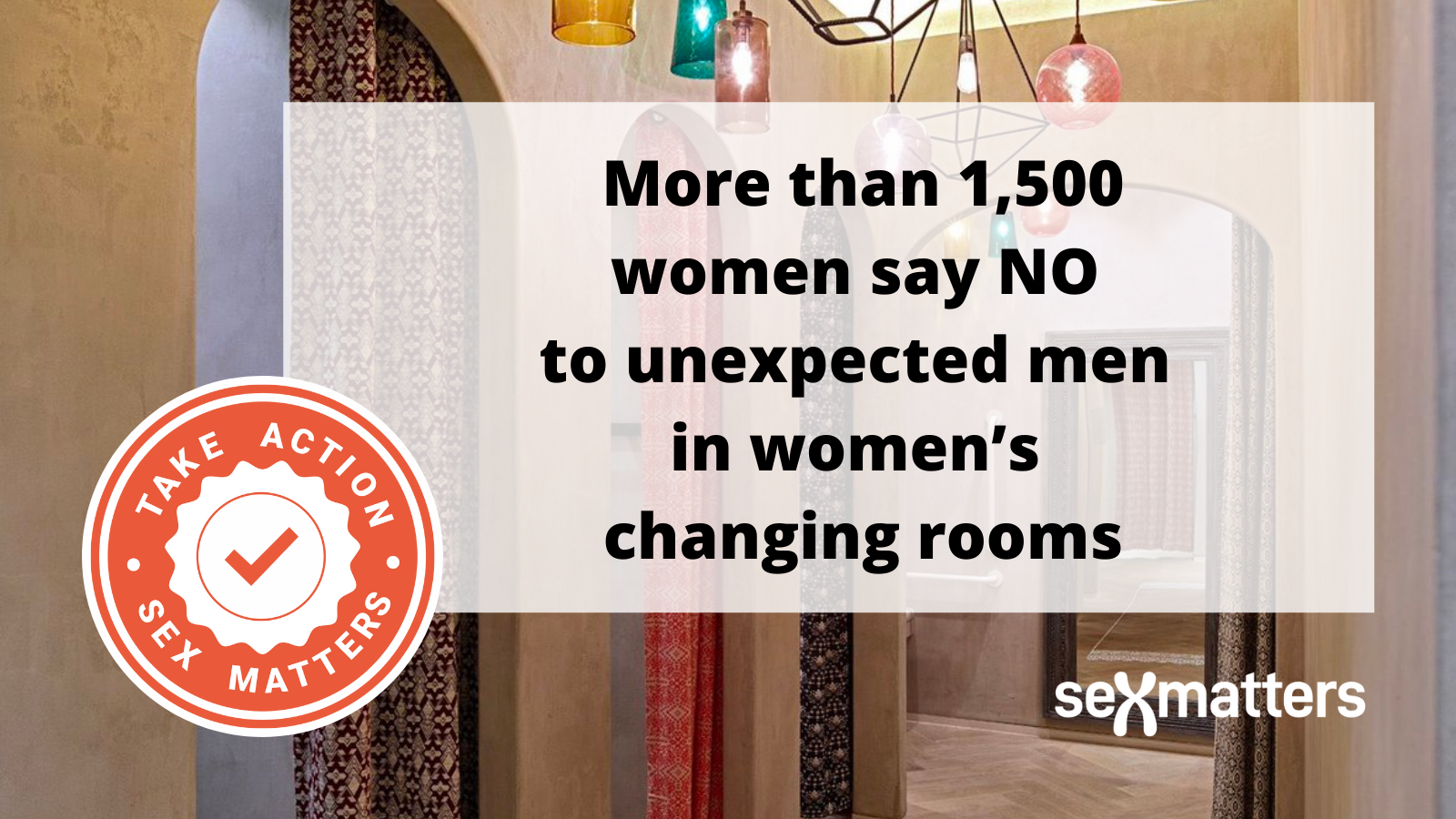Yes, sex DOES matter in changing rooms

Following our blog post, more than 1,500 customers wrote to Monsoon to tell them why female-only changing rooms are important. Here’s one letter:
“Dear Monsoon,
What on earth are you thinking? Please get a sense of proportion here. The vast majority of your customers are female and will not take kindly to finding any kind of male in their changing rooms. For goodness sake reverse your ludicrous policy and apologise for your temporary lapse of judgment on this issue.”
Some people who wrote in explained that they were survivors of rape or childhood sexual abuse, or had particular medical or religious reasons why single-sex privacy is important to them.
Others said they simply prefer and expect female-only privacy. They don’t want to be surprised by a man in a space they thought was just for women.
“Changing in public is one of the most vulnerable things and it is important to feel safe and secure and also to not feel self-conscious – curtains can sometimes be seen into which is fine if it’s only women around.”
Monsoon has not responded publicly yet, but its CEO did agree to meet in person with Sex Matters. During a candid and productive conversation, he assured us that the company is listening to customer concerns and developing its policy. We will be keeping a close eye on this.
Changing rooms
Monsoon sells women’s and children’s wear. It has a mixture of changing rooms – some shops have the familiar setup with curtained cubicles and a common area; others have cubicles with solid doors that lock and open directly into the store. Some have an additional “personal shopper” changing room which is separate from the main changing area.
This means that in-store assistants have discretion to manage the changing rooms in some stores to allow different customers access at different times.
Monsoon says it tries to accommodate everyone, including for example fathers and grandfathers of children, as well as transgender males. But it also recognises that many of its female customers want female-only privacy.
We urged the company to ensure that its policy provides clarity to staff and customers about the arrangements in each store. This means they should:
- Have a clear policy for each store – setting out whether facilities are female-only, unisex, a mixture or flexible.
- Display the local policy with clear symbols in store.
- Put a directory of stores on its website with details of the type of changing facilities.
- Have a clear written policy directed to female customers so they can know which changing facilities are female-only and which are unisex.
- Have a clear written policy directed to male customers (whether they are accompanying female shoppers or wish to try on clothing themselves) so they know where they can and can’t use changing rooms.
- If the policy is to give store staff flexibility to manage the main changing area in different ways at different times, communicate this clearly.
- Assess the policy overall in relation to all protected characteristics – sex and gender reassignment, but also others such as race, religion, disability and age: is the policy clear to all users?
What Monsoon must not do is communicate to women and girls that a changing room is female-only (or allow them to assume this) while also having a policy that allows in members of the opposite sex at the same time.
What this also means is Monsoon cannot avoid explaining to male customers that there are limitations on when and where they can expect to use changing rooms in a women’s clothing store.
This should not be left solely to individual store staff, but must be communicated from the top – online and in written policies.
The Equality and Human Rights Commission’s new guidance should help with this.
[e2pdf-view id=”1″]
